Best PA Subwoofer - Powered / Active (2024)
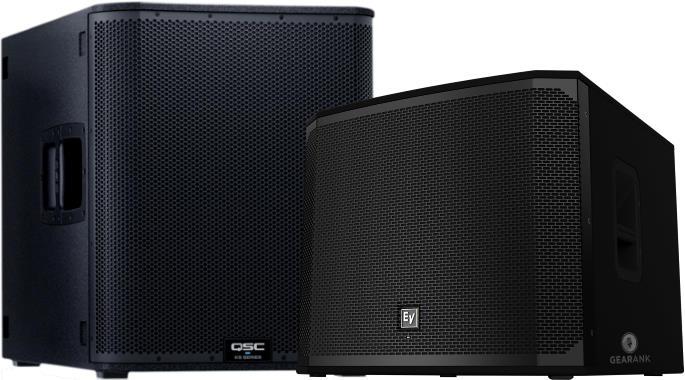
Author & Contributors
Raphael Pulgar
I've been an audio engineer for 20 years specializing in rock and metal recordings. I also play guitar and produce original music for my band and other content creators.
Budget Option - Under $500
Behringer Eurolive B1200D-PRO
Cons
- Too small for larger venues
Pros
- Good power to price value
- Excellent for small jazz/acoustic venues
- Portable subwoofer
- Decent filtering options
Budget speakers usually have corners cut on materials, build quality, and speaker quality. The Behringer Eurolive B1200D-PRO doesn't suffer from cheaping out despite its affordability.
It's spec'ed with a Class-D amplifier with a long-excursion 12" woofer that puts out a respectable 500W of power with a max SPL of 122dB. This efficiency also means longer running times with little risk of overheating. The internal limiter also protects the woofer from going beyond operating limits as well as protecting ears from sudden jumps in volume.
For pairing with other speakers, the B1200D-PRO also includes an active stereo crossover for outputting a high pass filtered signals to them. A high cut control lets you fine tune the PA sub with nearly any setup.
The B1200D-PRO is notably loud for its size. At 12", it's not the largest subwoofer but it does a good job of filling in the energy in small to medium venues. Having a smaller PA sub also means tighter sound in smaller environments where a large PA sub might introduce unwanted resonance. Jazz and acoustic bars benefit the most from its compact size and tight sound.
This is also where its limitations are evident. While it's able to do DJ Music and EDM (Electronic Dance Music), larger clubs will find the push and bass tones inadequate.
The Behringer Eurolive B1200D-PRO is the best budget powered PA subwoofer for small to medium venues. Especially for those that don't need too much thump and those who acknowledge that more bass isn't always beneficial. Jazz, acoustic, indie, and other bass-light genres still need some reinforcement on the low end, and the B1200D-PRO does an excellent job in its price points.
Specifications
- Frequency Response: 30Hz-132Hz (-10dB)
- Crossover: 140Hz
- Max SPL: 130dB
- Power Rating: 600W RMS
- Drivers: 1 x 12"
- Input Connectors: 2 x XLR
- Output Connectors: 4 x XLR
- Polarity: Not Specified
- Enclosure Material: 15mm Plywood
- Dimensions: 26.5" x 22.6" x 22.8"
- Weight: 82 lbs.
| Website | Source | *Rating Value |
| YouTube | HappyRider Reviews | 90/100 |
| Gearspace | Peter Z | 82/100 |
Under $1000
Electro-Voice ELX200-12SP
Cons
- Not ideal for larger gigs
Pros
- Impressive size-to-power ratio
- User-friendly DSP
- Intuitive app controls
The Electro-Voice ELX200-12SP, a compact 12-inch subwoofer, offers an impressive blend of portability and performance. With precise and punchy bass, it excels in genres like electronic music and suits smaller to medium-sized venues. Its robust build, including a 15mm plywood cabinet and durable EVCoat finish, ensures reliability.
Equipped with a powerful Class D amp (1200W) and QuickSmartDSP, this subwoofer delivers a max SPL of 129dB and offers customizable frequency settings. Bluetooth control enhances convenience for adjustments and sound assessment.
The ELX200-12SP's modern design, manageable dimensions, and built-in M20 Pole Mount Plate make it versatile. While not ideal for larger gigs, this is one of the best powered subwoofer for smaller to medium-sized events.
Specifications
- Frequency Response: 49Hz-135Hz (-3dB)
- Crossover: Adjustable (80Hz, 100Hz, 120Hz, 150Hz)
- Max SPL: 129 dB
- Power Rating: 1200 Watts Peak
- Drivers: 1 x 12" EVS-12L woofer
- Input Connectors: 2 x XLR-1/4" Combo
- Output Connectors: 2 x XLR
- Polarity: Not Specified
- Enclosure Material: 15mm Plywood with EVCoat
- Dimensions: 15.63" x 17.52" x 17.99"
- Weight: 42.11 lbs
The Highest Rated PA Subwoofers
Here are the best-powered subwoofers that you can buy today.
QSC KS118
Cons
- Slightly on the heavy side at 104lbs
Pros
- Pairs well with various speakers
- Deep mode excellent for EDM
- DSP with scenes great for variety across different events
This subwoofer is meant for loud use in medium to big venues, housing an 18" driver that is powered by a 3,600W amplifier.
Built-in DSP expands the functionality of the KS118, allowing for adjustable crossover and save-able scenes that can be used to conveniently tweak the subwoofer to match the venue and event requirements.
Another interesting feature is the selectable Deep mode, that further enhances low-end, ideal for electronic musicians, DJ Setup, and more. This means that you can switch to a more natural sounding subwoofer, or a deep sounding one, all in one package.
All these are housed inside a 15mm birch wood cabinet with built-in rolling casters.
With these specs, the sound quality is close to what you can get for premium or custom. With the switchable modes, the versatility of the KS118 is unmatched at this price point. This makes it an excellent choice for rentals where events and venues vary.
It helps a lot that QSC is one of the more popular brands in sound reinforcement, so you'd likely get it to match the best pa speakers from QSC. The KS118 also synergizes well with other brands thanks to the DSP, which allows adjustments of various settings to calibrate them to nearly any setup.
The KS118 suffers from the same problem as most subwoofers in its class, which is the weight. While it's a given that subs are heavy, at 104lbs, the KS118 is on the heftier end of the spectrum and would benefit from casters. If you want something lighter, checkout its lighter sibling, the QSC KS112.
If you've had a good experience with QSC loudspeakers and have the budget, then this is your best pick. If not, then the KS118 will easily turn you into a fan of the brand.
Specifications
- Frequency Response: 41Hz-98Hz (-6 dB)
- Crossover: Variable
- Max SPL: 136 dB SPL @ 1m
- Power Rating: 3600W Peak Class D
- Drivers: 18"
- Input Connectors: 2 x XLR-1/4" combo
- Output Connectors: 2 x XLR
- Polarity: Not Specified
- Enclosure Material: 15 mm Birch Plywood
- Dimensions: 25.2" x 20.5" x 30.9"
- Weight: 104 lbs.
| Website | Source | *Rating Value |
| Sound On Sound | Mike Crofts | 98/100 |
| Church Production Magazine | Loren Alldrin | 96/100 |
Electro-Voice EKX-18SP
Cons
- Lack of casters slightly hinders transportability
Pros
- Light for the size
- Fast transient response great for rock and metal
- DSP enables quick matching with other speakers
- Cardioid Control Technology helps directionality
The Electro-Voice EKX-18SP gets good ratings thanks to its big 18-inch woofer and 1300W amplifier, and its most interesting feature is its Cardioid Control Technology which focuses sound projection onto the audience while reducing stage noise.
It also comes with built-in DSP (Digital Signal Processing) that allows for quick setup and matching, be it with your other speakers or the venue it is employed in.
And it is relatively light considering it comes with an 18" LF Driver.
Not all 18" subs are made the same. It has a large cone with a big excursion range. This means that to get a balanced sound, an enclosure needs to be engineered around it that has the right amount of airflow. Rock and Metal genres are surprisingly more demanding of good subwoofers, in my experience, as they have faster transients and require more careful balancing with the bass guitar. The EKX-18SP has a fast transient response for the woofer size, which makes it great for the aforementioned genres' rapid double pedal styles.
One thing to note is that it doesn't come with casters, so that might be a dealbreaker if you're looking for something a bit more easily transportable.
Having said all that, the EKX-18SP is a serious PA sub that will fit most musical and event applications. It excels in band-centric applications where transient response is usually favored over raw power.
Specifications
- Frequency Response: 35Hz to 180Hz (-10dB)
- Crossover: Adjustable (80Hz, 100Hz, 120Hz, 150Hz)
- Max SPL: 134 dB
- Power Rating: 1300 Watts Peak
- Drivers: 1 x 18" EVS-18C subwoofer
- Input Connectors: 2 x XLR-1/4" Combo
- Output Connectors: 2 x XLR
- Polarity: Not Specified
- Enclosure Material: 15mm Wood
- Dimensions: 20.4" x 23.8" x 24"
- Weight: 72.3 lbs
| Website | Source | *Rating Value |
| YouTube | DJ Andrew Yates | 90/100 |
| Sound On Sound | Mike Crofts | 94/100 |
Turbosound iQ18B
Cons
- Enclosure may not fit in tight spaces
- Caster wheels may vibrate and cause noise
- Some reported issues with pole mount durability
Pros
- Punchy, warm bass
- Ultranet connection offers more connectivity options
- Able to handle higher SPL without overheating
The Turbosound iQ18B is an 18-inch subwoofer that delivers powerful, deep bass. It boasts a peak power of 3,000 watts and utilizes Klark Teknik digital signal processing for precise sound shaping. This subwoofer stands out because of its digital signal processing, which allows for speaker modeling and emulates the sound of other popular speakers. This expands both the tonal palette and the viability of the speaker for use with different venues and musical styles.
The iQ18B delivers punchy, warm bass with an Ultranet connection that offers more connectivity options. It is also able to handle higher SPL without overheating.
The lightweight Class D amplifier technology makes it highly portable. The subwoofer's back-mounted casters add to its convenience, making it a top choice for gigging musicians and sound engineers.
However, it comes with a premium price tag and may not fit in tight spaces due to its large enclosure. Some users have reported issues with pole mount durability, and caster wheels may vibrate and cause noise.
The Turbosound iQ18B is a reliable, powerful subwoofer that adds low-end punch to any sound system. It combines robust construction, advanced features, and impressive performance, making it a go-to choice for professionals seeking high-quality bass reinforcement.
Specifications
- Frequency Response: 36Hz-100Hz (-10dB)
- Crossover:Active (High Pass L-R 24 dB/oct)
- Max SPL:127dB (Continuous), 133dB (Peak)
- Power Rating:3000 Watts Peak
- Drivers:1 x 18"
- Input Connectors:2 x XLR Combo
- Output Connectors:2 x XLR
- Polarity:Not Specified
- Enclosure Material:Birch Plywood
- Dimensions:27.2 x 21.0 x 22.0"
- Weight:87.5 lbs ( 39.8 kg)
Things to Consider When Buying a PA Subwoofer
-
There are several ways of setting up a subwoofer sound system. But the main goal is to have the subwoofer handle the lows, while the main PA speaker handles the mids and highs (via a voice coil). One of the most beginner friendly ways is to create a sub-mix on your mixing console where you send the kick drum and bass to the Aux output and then connect that to your powered subwoofer. Other output modes include running your subwoofers in parallel to your main PA speakers if your subs have high pass filters. In more complex setups you will use a crossover unit to split the frequencies before sending the signal to your subs. It's beyond the scope of this guide to provide comprehensive information on integrating subwoofers so here is an article you might find useful: Using a Powered Subwoofer to Augment Your Existing PA.
-
Acoustic performers and folk style bands will find the smaller 12" drivers provide all the bottom end they need, but if you use 808 beats and other bass heavy styles then you'll need larger drivers that are capable of moving a lot more air - this is particularly true for EDM style DJs. Don't drive your speakers over the limit for prolonged periods of time to prevent damage and Crackling from Speakers.18" subwoofers like the Electro-Voice EKX-18SP and Mackie Thump18S are are ideal if you need really big and deep sounding bass.
-
Many drummers and sometimes bass players use a powered stage subwoofer in addition to a standard stage monitor in order to get a full punchy bottom end on stage. And the best powered subwoofers that we listed here are capable of fulfilling this task. If you're planning on using multiple subs, you should get one with phase control, which allows better subwoofer matching.
-
Generally speaking, subwoofers aren't entirely portable friendly, being an extra speaker that you have to lug around. But for many, the added effort, space requirements, and weight of subs are justified by the sound they produce. Still, it will be wise to weigh your low-frequency range needs versus your convenience and mobility. If you're a solo performer with no one to help you carry your gear, then go for a compact powered subwoofer, or maybe no subs at all. With bulky subwoofers, you may want to look for mobility features like side handles, built-in rolling casters. If you want something lighter, you can go for one of the best passive pa subwoofers, but you'll still need a separate amplifier which also adds to your gear count and overall weight.
How to Integrate Subs Into PA Systems
Your Type of Music & Driver Size
Use as Stage Monitors
Portability
Best PA Subwoofer Selection Methodology
The first edition was published in 2016. The current edition was published on Feb 18, 2024.
For this edition, we looked at the best PA subwoofer units that you can readily buy in the USA, resulting in a short list of 34 of the most popular and highly rated powered PA subs - you can see them in the Music Gear Database. We then gathered and analyzed the most recent data from customer and expert reviews, forum discussions, and feedback, totaling over 7,900 sources. These data were then fed into the Gearank Algorithm to produce rating scores out of 100, which we used to rank the subwoofers according to market sentiment. We selected the highest-rated options to recommend above. For more information about our methods, see How Gearank Works.
About the Author and Contributors
Here are the key people and sources involved in this guide's production - click on linked names for information about their music industry backgrounds.
Lead Author & Researcher
Raphael Pulgar
I've been an audio engineer for 20 years specializing in rock and metal recordings. I also play guitar and produce original music for my band and other content creators.
In my experience of doing live sound, the best venues are the ones with a good subwoofer that pairs well with both the mains and the venue. PA sub selection is dependent on the purpose: Is it for a rental, rehearsal, or venue? How large is the space? These things are what influence how I calibrate venue sound. It's always better to err on the side of too much power than too little, but the tradeoff there is size and portability. The selections in this guide cover a wide range of use cases so I recommend getting acquainted with your intended purpose while reading through the guide.
Contributors
Jerry Borillo, Jerome Arcon, & Alden Acosta: Product research.
Alexander Briones: Supplemental writing and Editing.
Jason Horton: Supplemental writing, Editing and Illustrating.
Media
Main/Top Image: By Gearank.com using photographs of the QSC KS118 and Electro-Voice EKX-18SP.
All videos have been embedded in accordance with YouTube's Terms of Service.
The individual product images were sourced from websites, promotional materials or supporting documentation provided by their respective manufacturers.



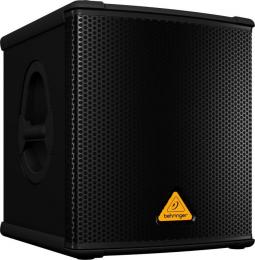
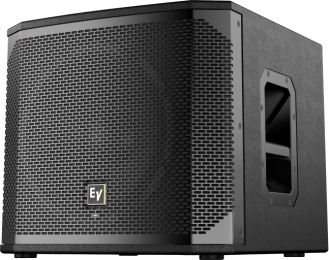
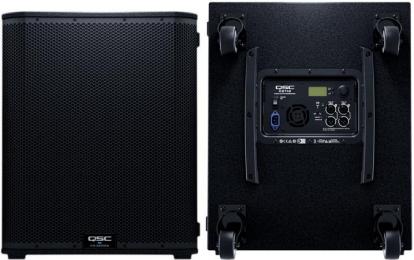
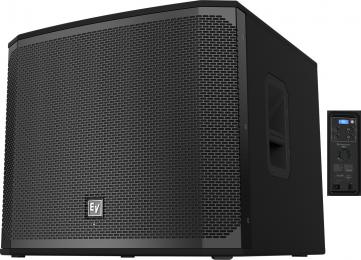
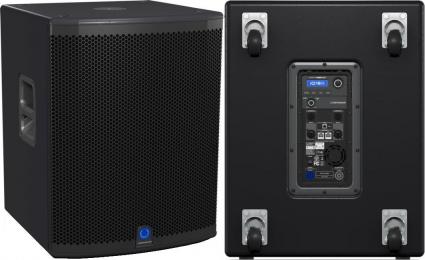
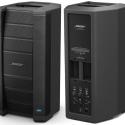
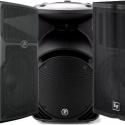
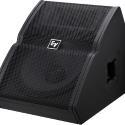
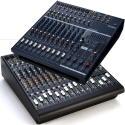
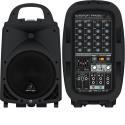
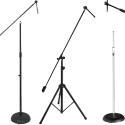

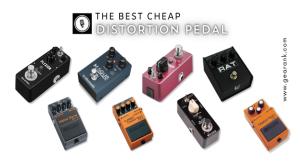
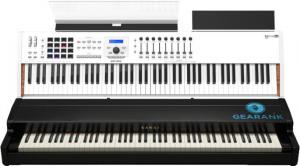
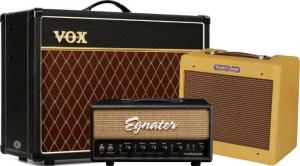
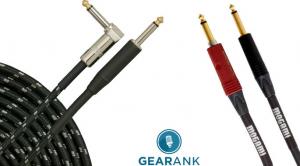
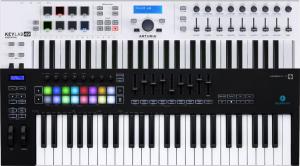
Comments
Publication of 2022.10
Submitted by Jason Horton on
Publication of 2022.10 Edition resulted in the following subs coming off our recommended list due to having been out-ranked by our current recommendations:
I smell bullshit here, dj's
Submitted by voivod (not verified) on
I smell bullshit here, dj's are praising turbosound and rfc's instead. Mackie srt line is worse then thump? WTF. Please explain.
We recommend only the subs
Submitted by Jason Horton on
We recommend only the subs with the highest ratings - you can learn how the ratings are calculated in the article How Gearank Works.
Publication of our November
Submitted by Jason Horton on
Publication of our November 2021 Edition resulted in the following subs coming off the recommended list above:
As a newbie to live sound
Submitted by Bob (not verified) on
As a newbie to live sound mixing, a basic question: For a 4 piece rock band (guitar, bass, keys, drums, vocal), what is the best way to add a powered sub to an existing 1600 Watt board that does not have a separate 'sub out' jack? I'm considering, as an example, EV's 'EXK-18SP', but want to make sure I can use it to filter out low freqs only, and have my main board handle only mids and highs. Thanks, in advance!
Hi Bob,
Submitted by Raphael Pulgar on
Hi Bob,
If your powered mixer has a free monitor out, you can rout it to an eq (to remove frequencies higher than 100hz) to a powered subwoofer and use the monitor level on specific channels to feed it to the sub. It's a hack but it will do until you get a better powered mixer.
Check out the best Powered Mixers and Subwoofers here:
Powered Mixing Consoles
PA Subwoofer
The October 2020 update
Submitted by Jason Horton on
The October 2020 update resulted in the following subs coming off the recommended list above, but you can still see our analysis of them:
Powered
Passive
I'm wondering how the Bose B1
Submitted by Tim (not verified) on
I'm wondering how the Bose B1 made it in at an exclusion of others when it barely exceeds the output of home theatre in a box subwoofers.
It's because more than 50
Submitted by Jason Horton on
It's because more than 50 people who have used it rated it higher than most of the other options available. You can read more about how we produce our ratings at How Gearank Works.
As a result of our November
Submitted by Jason Horton on
As a result of our November 2019 update the following subs came off our recommended list above but you can still see our analysis of them:
Powered
Passive
The thing is, you need a sub
Submitted by Joe Havlicek (not verified) on
The thing is, you need a sub to thump. In my humble opinion, there is no substitute for a pair of JBL STX 828's paired with two Lab Gruppen fp6400's in bridge mode -- you can get the fp6400's online for about 1K each. This will get you the punch and thump. Combine that with a dbx driverack 260 (available *cheap* online) or a dbx driverack Venu360 and you will not be disappointed.
Agreed. I've ventured into
Submitted by Gregory Mitchell (not verified) on
Agreed. I've ventured into the active sub box idea every time with disappointment. No headroom. Nothing compares to a pair of dual 18 boxes powered by 2 separate amps running bridged mono. Such a drag to load in and out, but worth it.
I wish to respectfully
Submitted by Peter Buchta (not verified) on
I wish to respectfully disagree with removal of the QSC KW181 review. It is certainly better than some of the other powered sub woofers that are listed in this review. True, that it is more expensive than some of the other competitors on this list but price and production age shouldn’t appear to be the main dominating factor for inclusion/exclusion from your list of high quality devices.
I personally have a high
Submitted by Jason Horton on
I personally have a high opinion of the QSC brand, but the decision to remove the QSC KW181 from the recommended list was based purely on ratings and nothing else. It remains eligible for inclusion in this guide and could come back if its ratings are high enough when we do the next major update of the subwoofer category.
Due to a lack of availability
Submitted by Jason Horton on
Due to a lack of availability the following sub woofer has been removed from the recommended list above: Yamaha DXS12
whats your thoughts on sound
Submitted by Doug sharp (not verified) on
whats your thoughts on sound quality difference between turbo sounds tcs-b218 vs the tfs900b subwoofer, one is bandpass other is horn loaded, want to use for playback music and home theater.
We haven't rated either of
Submitted by Jason Horton on
We haven't rated either of those Turbosound subs, not because there's anything wrong with them, but because they're high-end systems that aren't in wide use and consequently there aren't sufficient rating sources available for us to examine.
Note that in order to avoid personal bias in the ratings we provide, we don't directly test the gear ourselves, instead we base our ratings on detailed analysis of the tests conducted by others - you can read more about our methods in How Gearank Works.
I'm curious if you have had a
Submitted by G W (not verified) on
I'm curious if you have had a chance to review ev's new line of the elx 200 series. I recently purchased the EV ELX200-18sp subwoofer. And I must say I like it better than my EKX. Anyways just curious on your thoughts opinions.
When we published our latest
Submitted by Jason Horton on
When we published our latest update to this guide back in January, there were insufficient sources available for us to provide ratings on the ELX200 series.
I've checked again today, and although that's still the case for the passive options in the range, we now have ratings for the powered options which you can see in the Music Gear Database.
The early reports are promising and I wouldn't be surprised to see the ELX200-12SP or ELX200-18SP make it into our recommended list when we next revise this category in detail.
As a result of our January
Submitted by Jason Horton on
As a result of our January 2018 review of the PA Subwoofer market, the following subwoofers were removed from our recommended list:
Next review, please include a
Submitted by avnett (not verified) on
Next review, please include a few models from Seismic Audio. I have several 18" PA subs, including JBL, Yamaha, & CV and for the dollars spent, the SA subs are really good. They are punchy, accurate, and hold up very well to the constant pounding and abuse of three hour EDM-House set lists.
what about the rcf subwoofers
Submitted by Edward Hines (not verified) on
What about the rcf subwoofers?
RCF didn't make the short
Submitted by Jason Horton on
RCF didn't make the short list when we originally published this guide - you can see most of the subs that were on that list here.
Based on RCF's current ratings it's quite likely they will be on the short-list when we next update this guide, and if they rate highly enough they'll be included in our recommendations.
Hello whats about Samson Auro
Submitted by Luis (not verified) on
Hello whats about Samson Auro 1200? Im looking for a small sub, i own db technologies 15 and 18 ones but no stock for 12
We haven't rated the Samson
Submitted by Jason Horton on
We haven't rated the Samson Auro D1200 yet but we might if it has high enough ratings when we next update this guide.
An alternative would be the Yamaha DXS12, although it does cost more than the Samson Auro D1200.
I came across this from
Submitted by Jeremy Richey (not verified) on
I came across this from google search, and have to say that I am pretty unimpressed by this comparison. Please include 1 watt/1 meter halfspace readings in your ratings, as max spl means nothing if you do not know how much power you are going to need to get there, and fix your max spl ratings. The industry has standardized on half space, 1 watt/1 meter, calculated at the speakers advertised ohms (4 or 8), to make comparisons possible.
The Peavey PV118 you have listed as Max SPL: 118 dB, is 95db 1w/1m, rated 200 watts continuous (200 watts 2.83vrms/8ohms)/400 program/800 peak.
The Electro-Voice ELX118 you have listed as Max SPL: 134 dB, is rated 96db 1w/1m, rated 400 watts continuous (2.83vrms/8ohms)/800 program/1600 peak.
In practical circumstances, there is only a 4db difference between the two (1dB due to sensitivity, 3dB due to double power). You have a difference of 16dB listed though! Care to explain how you came up with those numbers?
Sources:
https://peavey.com/products/index.cfm/item/665/116087
http://www.electrovoice.com/product.php?id=1075
Hi Jeremy,
Submitted by Jason Horton on
Hi Jeremy,
Thank you very much for pointing that out.
The Max SPL ratings came from the manufacturers' spec/data sheets and they are correct (I re-checked them today), however I agree with you that the sensitivity ratings should also have been included - leaving them out was entirely my mistake.
I've now added the sensitivity ratings to the passive subwoofers above.
Thank you for the comment, I
Submitted by Jeremy Richey (not verified) on
Thank you for the comment, I'm pleasantly surprised by the response. I guess I never pay attention to Max SPL ratings because how a speaker performs is calculated off sensitivity and power. IMHO this is an example of the manufacturers being misleading. I typed into an SPL calculator, and I can see how they are coming up with these numbers.
96dB 1w/1m sensitivity, with 1600 watts, corner loaded, gives 134db. (what the Electro-Voice ELX118 is rated for)
95db 1w/1m sensitivity, 200 watts, half-spaced, gives 118dB. (What the Peavey PV118 is rated for, this is the standard way of rating)
What these guys are doing would have been considered cheating a few years ago, by publishing corner loaded (1/8th space) at peak power rating. I looked up the active QSC KW181, and the Yamaha DSR118W, and there was no sensitivity listed for their cabs, but their numbers seem only possible if they are doing this as well. This will cause problems comparing passive vs active speakers. See Yamaha's passive SW118V, published in half space: here.
If you calculate the Peavey PV118's "Max SPL" as EV did for their ELX118, by corner loading them instead of half space loading (+6db), and base it off peak power instead of continuous (another +6db), you get a "Max SPL" of 130dB. That said, Peavey is rating correctly, the others are not.
Thanks for adding the sensitivity. Now at least I know what's going on. Unfortunately 1w/1m half-space, is much more important to know than Max SPL, which is not a standard to my knowledge.
A note on Behringer: I bought a 200w 1u quad amp from them, because it was 1u and I was curious to try one of their products. I ran a sine wave through it and wasn't able to get more than 30 watts through it, measured via multimeter. They flat out lie on their specifications. I will never buy another product from them. I would suggest only include products from them you've tested.
As I'm sure you're aware, but
Submitted by Jason Horton on
As I'm sure you're aware, but others may not be, there are several different ways to measure power and several ways to calculate ratings based on those measurements.
Looking at the numbers you stated for the 1u amp my guess is that they used some kind of very generous peak rating instead of a root mean square as you appear to have done.
Some manufacturers seem to be deliberately vague about power ratings in order to advertise the highest headline number they can come up with - we've begun asking manufacturers about their rating methods so we can offer consistent information across all our guides as we update old ones and publish new ones - some manufactures are proving to be more responsive than others but hopefully we'll get there.
To the one making a fool of
Submitted by Dear Daddy (not verified) on
To the one making a fool of himself- I feel as tho you are trying to find an error that can't be backed up, therefore causing the Gearank team to do a retraction. As far as I'm concerned, the testing they did was awesome. I'm a 20+ year sound engineer and I will, and would have, never been so blatantly crass over 16bB. Seriously? 16 dB? You then told them "Care to explain how you came up with that?" Really? You're a blog bum, aren't you? Just cruising thru sound blogs looking to prove someone wrong or just a little more off the shoulder than you're happy with. Gearank guys do great work. I have never added any of my 2 cents to a blog...ever! Until now! It's actually true, the saying 'you learn more with your mouth shut and your ears open'. In this case, well, you figure it out. You seem to be mr smarty pants. You're also the guy that makes all us other sound guys look as tho we don't know what we're talking about. You should try leaving your calculator in your pocket protector, put your suspenders back on, take off your slippers - shower, of coarse - and put the cheese puffs back in the cupboard...you've had plenty! Not in that order, of course. Good thing I said something, wouldn't want you to belittle me on well known and very informative blog. I earn business by keeping up with these guys. 16dB has never been an issue when looking at speakers. If I found a small oops, I'd email the blogger and discuss it that way. Ugh. I'm sick of you ready. Go hide under you moms bed, where you just came out from to hassle this blog. Go, now. Your milk and cookies and new coloring book is ready. Nothing is wrong with the last 3, I love them. But hiding under you mothers bed as a grown adult is. Goodnight.
Wow, I didn't see this till
Submitted by Jeremy Richey (not verified) on
Wow, I didn't see this till now. First off, Congratulations on your long career as a sound engineer, I've only been doing it about eight and a half years.
I never run powered speakers, because as you know, you have to run twice the amount of cables for them. They've become somewhat of a fad with DJ's and garage bands lately, so I'll blame the market as well as the many budget brands for why they are not using the prior industry standard (1w/1m RMS rating). As to whither a 16dB difference matters or not, it is a power factor of about 40x. In fact, it is the difference between typical home theatre set (80db), and typical Prosound equipment (96db). So I really don't understand how someone could not consider 16db a big deal.
I am pleased at the response from GearRank. There is no end to the number review sites which are less than reputable, and this comparison was my first time here. I don't believe after my interaction with them that they are one of those review spam sites. They acknowledged the differences and explained where they got the ratings.
I do believe that when comparing things, you have to compare them accurately. If it were my article, I might put a note about the differences between the powered and unpowered speaker ratings. However anyone who is curious enough to understand why the disparity exists will be able to read this exchange and learn what I did.
Best wishes sincerely,
--Jem
Hey dude, that was obviously
Submitted by voivod (not verified) on
Hey dude, that was obviously a troll or someone who doesn't know what he is talking about.
Thanks for pointing out the obvious lack of knowledge errors.
Best subs for the money you
Submitted by Adubs (not verified) on
Best subs for the money you will ever find will be BASSBOSS.
They do sound good, but for
Submitted by Brian (not verified) on
They do sound good, but for the money their are way better subs! A single 18" sub is over $3500! Could get two RCF 8003 for that price...and I have demoed both!! Not much difference in sound, but twice the price. Just my opinion!
Hello, I liked your review of
Submitted by Erik Naugle (not verified) on
Hello, I liked your review of the JBL PRX718XLF subs and was looking to purchase a pair. You said the street value was $799 each but I can not find any near that price. Any suggestions? Most of the ones I am seeing are $1200 to $1400 each. Thank you
Hi Erik,
Submitted by Jason Horton on
Hi Erik - I checked and found that all the major retailers have sold out and it's no longer available for $799. The lowest price I found was $1150 at Amazon - that price may not last long. Thanks for letting us know about the problem - I've removed the outdated JBL PRX718XLF information from the guide above. Anyone who's interested in our meta-review can still find it at JBL PRX718XLF 1500W 18" Powered Subwoofer.
Any way you could do a
Submitted by Milton (not verified) on
Any way you could do a powered sub comparison based on wattage? I am specifically trying to compare the Turbosound IQ18b, the ETX-18SP and the QSC KW181.
Bespoke sub comparisons aren
Submitted by Jason Horton on
Bespoke comparisons aren't a viable option due to the amount of time they require to do at our usual high standards, however we do take all comments into consideration each time we update one of our guides.
We also make nearly each piece of gear we've analyzed available in our music gear database and you can see the Gearank scores of each item you mentioned by clicking here.
The JBL PRX718xlf are NOT
Submitted by Patrick (not verified) on
The JBL PRX718xlf are NOT designed to be mounted on a pole. They have a pole mount for a top speaker to be mounted above them. Don't want some knucklehead trying to put one of these up on his On-stage speaker stand.
Has anyone tested the Peavey
Submitted by D'Coach (not verified) on
Has anyone tested the Peavey Dark Matter 115 or 118 Subs?
What about the Peavey PVXP 15 inch Sub?
I see no Yorkville speakers
Submitted by Wayne (not verified) on
I see no Yorkville speakers mentioned here. Were they not considered for comparison, or found to be under ranked?
We didn't keep any specific
Submitted by Jason Horton on
We didn't keep any specific notes on Yorkville Subwoofers when we did the research for this guide - all I can tell you is they didn't make it past the first level of screening which means that at the time it was considered unlikely that they would rate high enough to be included.
highly recommend the
Submitted by sunrcr (not verified) on
I highly recommend the Yorkville ls801p's.
Hi - I know I'm late to the
Submitted by Burton Brown (not verified) on
Hi - I know I'm late to the topic.
Hope I get a response - I'm looking to upgrade my sound, have been considering the below listed bass bins.
Alto Truesonic TS218S
Electro-Voice ELX118P
They almost have similar specs but the max spl ratings and low end on the EV is slightly better but almost twice the price of the Alto.
I’m not able to listen to them as no one store has both in stock. So I can’t really rate them on sound quality.
If possible – can you help me out?
Thanks.
The Alto Professional
Submitted by Jason Horton on
Hi Burton - you're not late, in fact you're kind of early because the Alto Professional Truesonic TS218S only became available in stores in the last few months and there are only a limited number of rating sources available for it so far - but I've generated some data for you:
I've added the TS218S to our public database so you can compare it's Gearank score with the ELX118P.
Gearank scores change as new data becomes available and based on some of the reviews I read I wouldn't be surprised if the TS218S earns a higher score over time, but it has a long way to go before its ratings would be high enough for us to include in one of our music gear guides.
BTW - The ELX118P has a street price that's only slightly higher than the TS218S and as I type this (and this may change at any time) there is currently a lower price for the ELX118P on Amazon than for the TS218S on Amazon.
I hope this helps.
Thanks a Ton for your
Submitted by Burton Brown (not verified) on
Thanks a Ton for your response - I'm based in South Africa. Over here the Alto's are selling around 550 dollars & the EV sells around 1000 dollars. :(
So I'm leaning more towards the Alto + I have a pair of Alto 15's - But I'm certainly considering moving to EV in the very near future.
Thanks for an awesome site - Happy new year all the way from S.A :)
I was looking at the I/O for
Submitted by Andy (not verified) on
I was looking at the I/O for the DXS12, but it says input and "thru". Is thru truly an output or like a modified input? Because on your stats it says Input Connectors: 2 x XLR
Output Connectors: 2 x XLR
There are 2 Ins and 2 Thrus
Submitted by Jason Horton on
There are 2 Ins and 2 Thrus on the Yamaha DXS12.
The outs are called Thru because the signal is running in parallel to the input rather than in series.
Hello what should be the
Submitted by sulaiman (not verified) on
Hello what should be the ratio of speakers to the one amplifier given that the amp can drive out 5000 watts. So how many speakers can it drive to its maximum without damaging it or vice versa? Let me say if i had only EV bass speakers.
Unless you have a very
Submitted by Alan Tefan (not verified) on
Unless you have a very expensive professional amplifier, it's not going to be able to output 5kW. If you have an amp that can really output 5kW then you're not going to be asking that question. You'd need a 32 amp mains supply for that!
You're also asking the wrong question. Let us assume you have an amp rated at 500W continuous. This 500W is the maximum it can output under ideal conditions. These ideal conditions are met when the impedance (measured in ohms) of the amplifier is equal to the impedance of the speakers being driven. For example, if you have an amplifier with an impedance of 4 ohms per channel, then it would be at its most efficient when driving one 4 ohm speaker per channel, or two 8 ohm speakers per channel etc. Connecting speakers with lower impedance than the amp will risk damaging your amp - it effectively creates a short-circuit.
With your amplifier you should have a spec sheet, and this will tell you what the continuous power output is. If you have speakers which are impedance-matched to your amplifier, make sure that the continuous power rating of the speakers is greater than or equal to the continuous power output of the amplifier, otherwise you risk burning your speakers out.
So if your amp is 2-channels, 4 ohms per channel, 500W continuous, you need a pair of subs with an impedance of 4 ohms and continuous power output of 250W or greater.
Make sense?
Pages